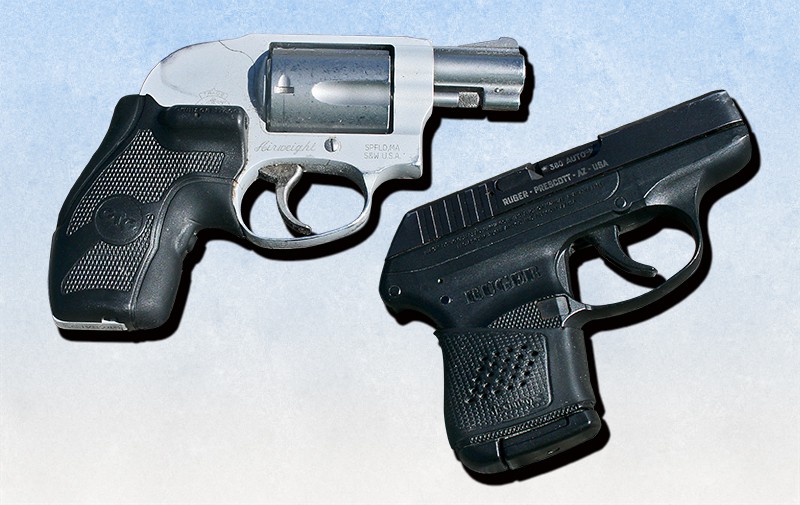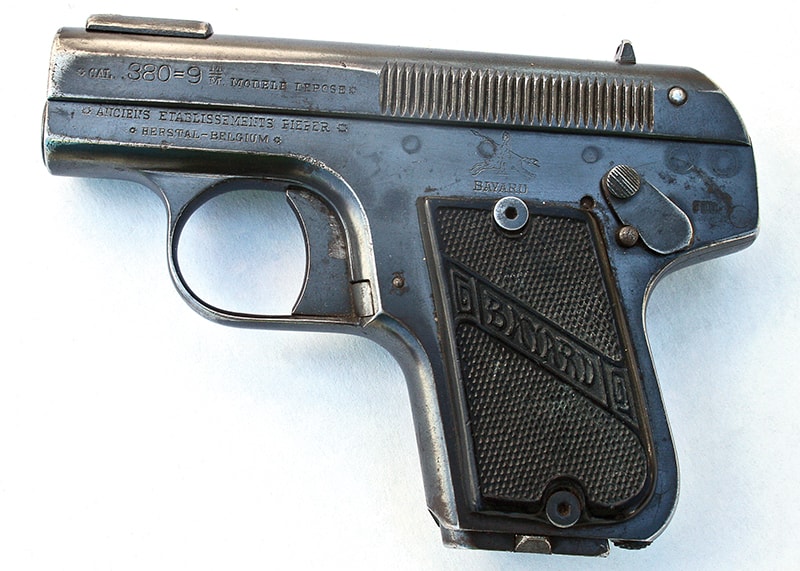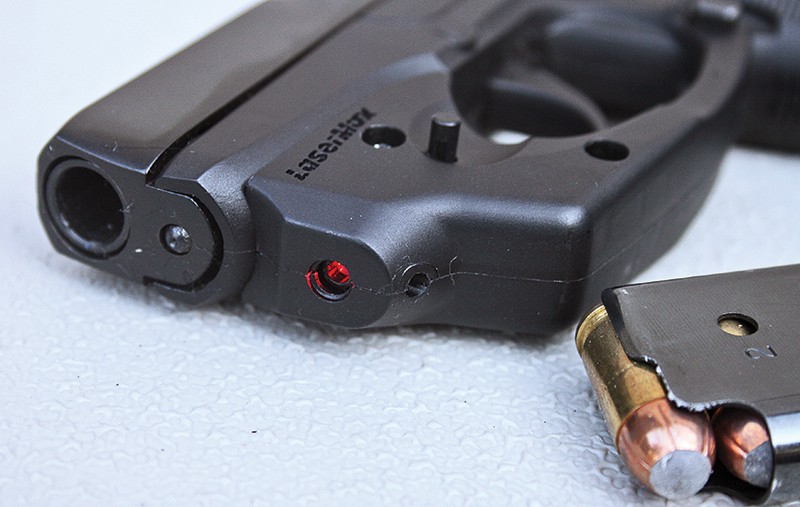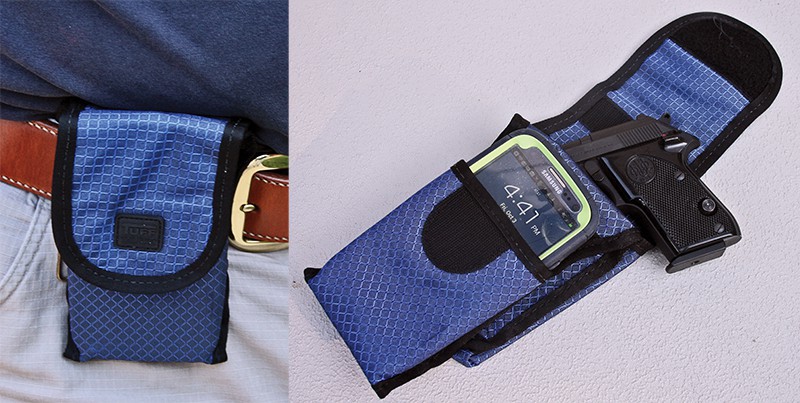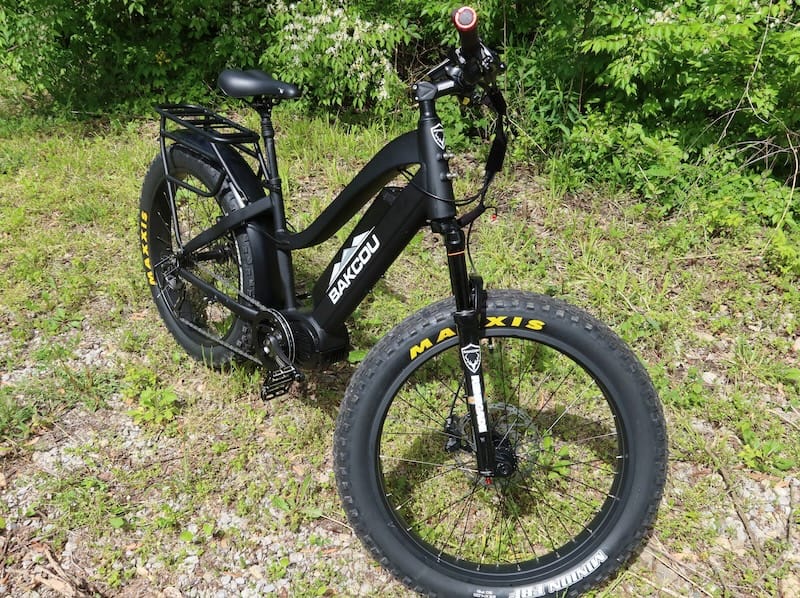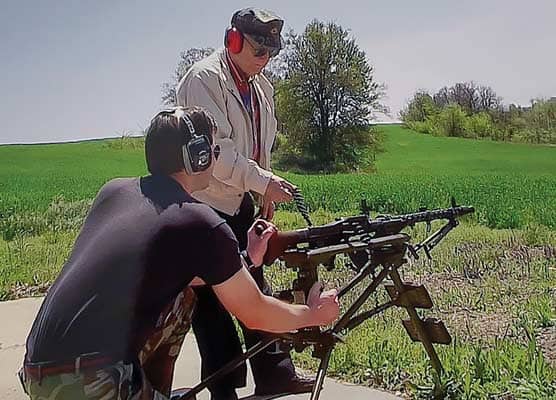Mouse Gun Magic
Even If It's Less Than Mighty, A Gun In Hand Beats One At Home
The defensive handgun might be best described as a tool of convenience used to protect your life. Most of us recognize a shoulder weapon, such as a rifle or shotgun as a much more decisive instrument, but they are neither practical nor socially acceptable when going about your daily routine. So, we’re left with the handgun. The uniformed police officer carries a pistol on his duty belt, ready to deal with anti-social behavior, but still able to perform his/her routine duties with little fuss. Responsible citizens, ever vigilant, carry their gun discreetly concealed and are able to blend into polite society.
I have long made the case to the effect if you need to carry a handgun, it should be chambered for a full-power service cartridge. Cartridges such as 9mm, .45 ACP and .38 Special, have proven track records. With good ammo selection and shot placement, they’ll give you the means to prevail. A hard fact for many people to accept is even relatively powerful handgun cartridges may not instantly put an assailant down. Goal-driven subjects, or subjects under the influence of certain drugs, may continue to fight after sustaining non-survivable wounds. Sure, they may expire 30 seconds or 30 minutes from now, but when the fight is on, you want them to stop what they are doing now.
Small Pistols, Less Power
In the early part of the 20th century, various manufacturers developed a class of handguns we now know as pocket pistols. These small self-loaders were chambered for less-powerful cartridges, ranging from .22 rimfire up to .380 ACP. Over the last several years, new designs have appeared on the market which are the epitome of small. These new pistols have played very well in the ever-expanding concealed carry market. Unfortunately, much of this appeal is for all the wrong reasons. Small may be handy, but not necessarily good.
But how small is too small? Never lose track of the fact you might actually have to shoot someone with your carry piece in order to save your life or a loved one. Does a sub-caliber piece have enough juice to put a determined adversary down for the count? How well can you shoot the mini-blaster? Would a slightly larger handgun chambered for a service cartridge be a better choice? Obviously, some serious consideration should be given to these questions.
Where Small Fits
My personal lifestyle allows me to carry a serious firearm just about all the time. Jackets and ties are no longer in the mix and most of the time I can get by with loose, casual attire. Individuals, who work in office environments and regularly wear business clothes don’t have the same degree of flexibility. Actually, in many cases, a conspicuous bulge or flashing a gun may get them fired. This is especially true for females, as they typically have a tougher time than the guys when hiding a gun. For many folks, it’s either a really small gun or no gun. And even a .22 beats a stern word or a stick.
Another niche for a mini-gun is as a backup to more serious hardware. During my law enforcement career, I made a practice of carrying a hidden backup gun (BUG) to support my primary sidearm.
Truth be told, my preferred BUG was a .38 Special snubbie. Dinosaur that I am, I still carry one today.
Today’s crime fighters, however, are more comfortable with autoloaders and many officers are using a small pistol as a BUG. Recently, a buddy of mine advised his suburban Atlanta department to procure a GLOCK 42 .380 ACP for each officer to utilize as a BUG. Department acceptance was overwhelmingly positive.
Ammo Potential
Many people in the know would argue true “stopping power” begins with .30 caliber rifles or a 12-gauge shotgun. Handguns, whether service or sub-caliber, however, can be integrated into our daily routine. Unless you are a soldier or SWAT officer, you will most likely be utilizing a handgun in any sort of armed confrontation. With this in mind, it’s best you understand its abilities and limitations.
Handgun bullets cause incapacitation in a number of ways. A shot to the central nervous system, even with a small caliber handgun, will instantly turn the lights out. On the downside, many such shots are simply luck. Consider the brain is pretty well armored by bone and has been known to deflect some very serious handgun bullets, would I still try? You bet I would!
Putting holes in vital organs whose job is to support life can also achieve incapacitation. The problem with sub-caliber ammunition is you either get penetration or expansion, but not both. If a hollowpoint bullet is used, there will be some degree of expansion or deformation. Small caliber hollowpoints usually don’t penetrate to the 12″ minimum in ballistic gelatin per FBI test protocol. Full metal jacket projectiles may punch through to 12″ or beyond, but don’t expand.
Is this a big deal? Maybe yes, maybe no. The best chance of success would probably be with frontal shots to the chest where quality hollowpoints can penetrate deep enough to strike vital organs. Lower velocities from short barrels and heavy clothing can prevent expansion.
An indisputable truth is many people stop fighting because of the psychological trauma of being shot, rather than sustaining an incapacitating wound. We can’t count on this, but it may buy you enough time to escape or go to Plan B.
The smallest calibers used for personal defense include the .22LR and .25 ACP. Depending on barrel length and velocity, muzzle energy is only about 70 ft./lbs., and any sort of bullet expansion is wishful thinking. Personally, I think pistols so chambered are best avoided and you’d be far better served with a like-size .32 ACP.
Although a tad larger than a true pocket pistol, both Ruger and Smith & Wesson are turning out ultra lightweight revolvers in .22 Magnum. Even from the short barrel, things are considerably more interesting than either the .22LR or .25 ACP, and both Speer and Hornady make .22 Magnum ammunition specifically designed for personal defense. Granted, you can realize a huge ballistic upgrade by going with an identical-size revolver in .38 Special, but the .22 Magnum may be a viable option for less committed users or those sensitive to felt recoil.
Several years ago, Beretta, Kel-Tec, North American Arms and Seecamp Co. began turning out really small .32 ACP pistols no larger than a classic .25 ACP. I picked up a Beretta Tomcat, which I have used as a backup piece on occasion. Pistols in .32 ACP offer twice the energy of the .25 ACP and make a lot more sense. Buffalo Bore, CorBon, Hornady and Winchester all offer enhanced .32 ACP loads designed for general defense.
Like the .32 ACP, a number of manufacturers are turning out tiny pistols in .380 ACP. Some examples include the Beretta Pico, GLOCK 42, and Ruger LCP. These are considerably smaller than classic designs such as the Walther PPK and they have quickly developed a large following. One should be aware the sub 3″ barrel of these mini-pistols diminishes velocity and terminal performance.
Better terminal performance may be achieved in .380 ACP with careful load selection. Buffalo Bore has taken a unique approach with their hardcast lead 75-grain offering. Since expansion in .380 ACP is somewhat questionable, they instead developed a load designed to punch deep into the vital organs. One .380 ACP load designed to reliably expand in short barrels is CorBon’s all-copper DPX hollowpoint. Unlike conventional hollowpoints, this load reliably expands when fired through four layers of denim into ballistic gelatin.
Little Margin For Error
Nobody wants to get shot, even with a mouse gun. I daresay most potential threats are managed without shots being fired, although you can’t count on being so lucky. It would be foolish to assume merely brandishing any handgun is likely to scare the big, bad wolf away.
As indicated earlier, there are a number of factors working against small, sub-caliber pistols. Generally speaking, handling qualities and ergonomics are vastly inferior to larger handguns and as a result, I find mouse guns take just a little more time to get into action. Unlike service size and compact pistols, the sights just don’t reach out and grab your attention and are difficult to pick up under extreme stress. Since bullet placement is critical to success, this remains an area of concern. Reduced ammunition capacity is yet another issue, particularly if you have to deal with more than one assailant.
Incidents where armed citizens have to resort to deadly force typically take place at very short range. In fact, most shootings involving law enforcement officers take place inside of five yards. But although the distance may be short, it is unlikely your assailant will be standing still or offering you an unobstructed shot like those targets stapled to a frame on the range. It is quite possible your opponent has closed inside your personal space and is trying to employ some sort of contact weapon you’re busy trying to block.
Unlike service caliber weapons, pocket pistol rounds may not have enough juice to drive through the area and into the chest to affect a quick stop. A multiple-shot burst to the chest, neck and face has a much better chance of meeting with success.
More often than not, danger will be close, but there is no ironclad guarantee. What if you had to fire with a degree of precision and engage a threat more than a few yards away, or a threat only partially exposed? Consider an upgrade over the hard-to-see factory sights. A very big improvement can be realized by adding a set of XS sights. Their 24/7 system features a shallow, rear V-notch mated to a large, white-dot front with a tritium insert, making them highly visible under all light conditions. Sets are available for Beretta, GLOCK, Kahr and North American Arms pocket pistols and this upgrade comes highly recommended.
Another consideration is to add a laser-aiming device. Crimson Trace and LaserMax both turn out high quality laser aimers that can be affixed to the triggerguard of a number of small hideout pistols. Lasers are visible in indoor environments, as well as in reduced light, and vastly improve hit potential with pocket pistols.
Packing The Mouse Gun
All things being equal, I’m a fan of strong-side belt carry. Mouse guns remain the exception to my rule. Rest assured, if I could discreetly carry a gun on my belt, I would opt for something bigger than a mini-blaster. Your needs, however, may be very different.
For me, it all comes down to a pocket holder or a small pouch not screaming “gun” like a fanny pack does. Pocket Concealment Systems and DeSantis both turn out pocket holsters designed to properly position the gun for a quick draw and keep it from getting fouled by loose change, lint and gum wrappers.
A small pistol contained in a quality pocket holster is very difficult to detect. Pocket draw is not as fast as off the belt and next to impossible when seated, but you can make it work. Should something not look right, I merely slide my hand into the pocket, get a grip on the gun, and continue to assess the situation. If all turns out to be okay, no one is any the wiser.
For the last few years, I’ve got a bit of mileage out of the Taclett Jr. from Tuff Products. The Taclett Jr. is a small, discreet clip-on bag available in small and medium sizes. I’ve worn a small copy containing a pocket pistol and it has yet to raise an eyebrow.
New from Tuff Products is the iTac Conceal Carry Phone/Firearm Holster. Like the Taclett Jr., the iTac is affixed to the belt with a heavy metal clip. The outer compartment contains a cell phone, while the inboard pouch harbors your handgun. Since the inside pouch is tucked down inside the pants, this setup is very low profile. Considering the proliferation of cell phones and other devices, the iTac is unlikely to draw any unwanted attention.
First Rule Of Gunfighting
Have a gun! It has been said in time of need, a small gun in hand beats a 1911 home in the vault. I certainly can’t take exception to that statement. We should, however, strive to carry the largest, most powerful handgun we can shoot to a high standard, yet effectively conceal. Depending on any number of factors, it could be a full-size service pistol, snubbie revolver or pocket pistol. Your clothing, body type and social setting all weigh heavily into the equation.
Without question, mouse guns can fill a useful niche. They may not be our first line of defense, but they can go where larger handguns can’t. Don’t fall into the trap of convenience. True, those little guys are really handy, but whenever possible, I would prefer to bet my life on something a little more decisive. But you may not always have that latitude.
If a mouse gun fits into your game plan, by all means, have at it. Don’t neglect practice. Load up with good ammo and stay tuned into what is going on around you. A small caliber pistol may not be as effective as some other tools, but under certain circumstances, it may be the only choice.

Get More Carry Options content!
Sign up for the newsletter here:
